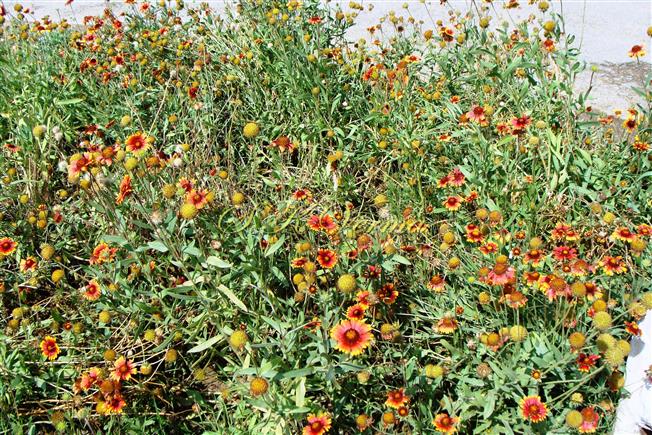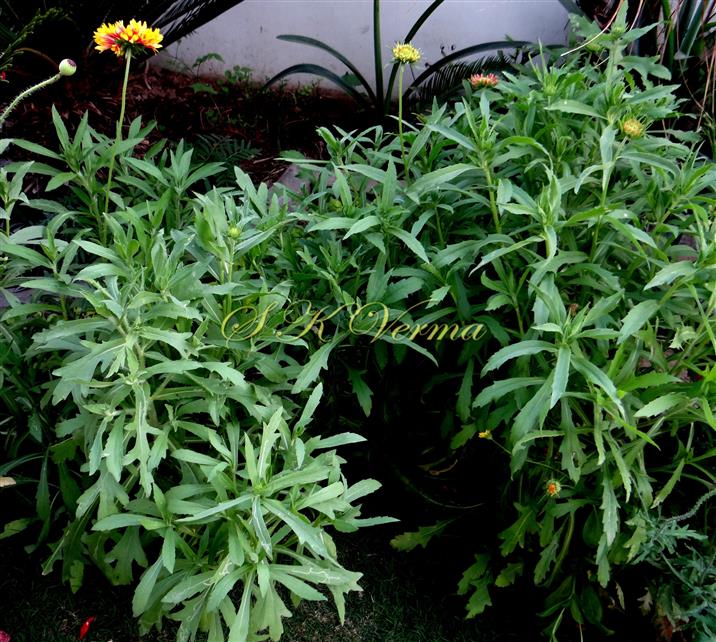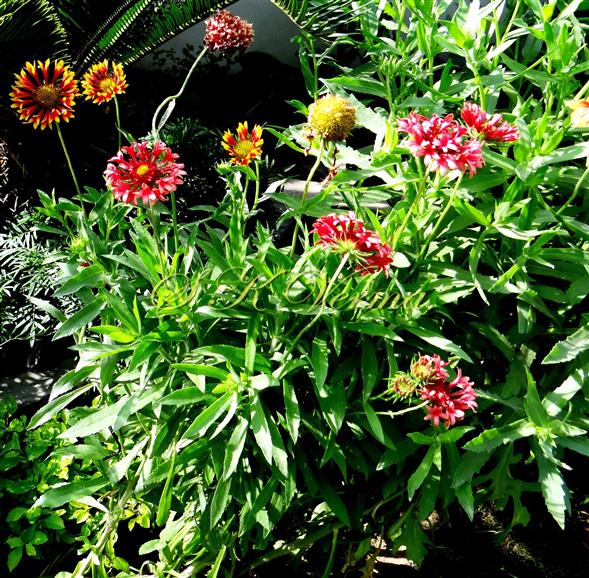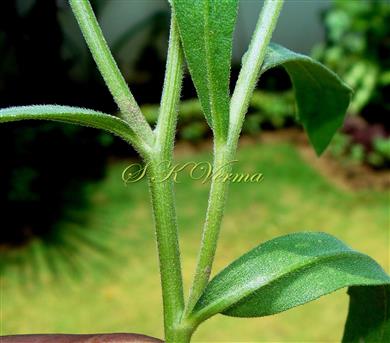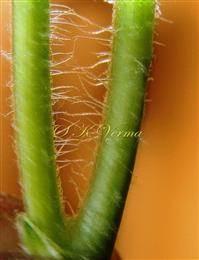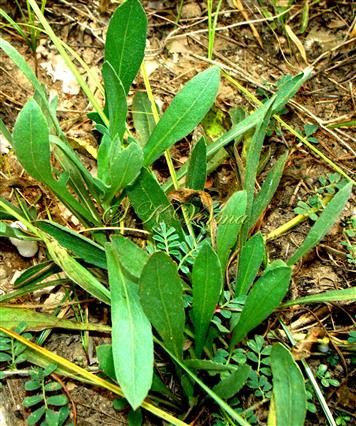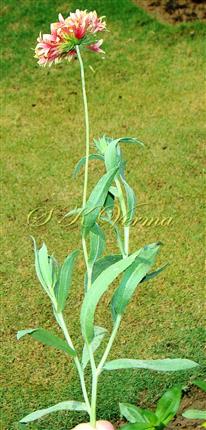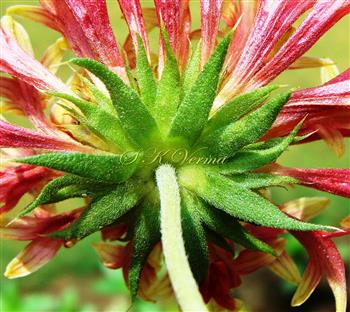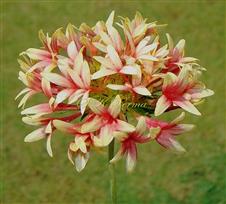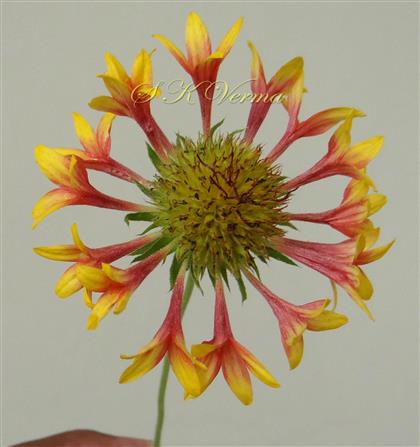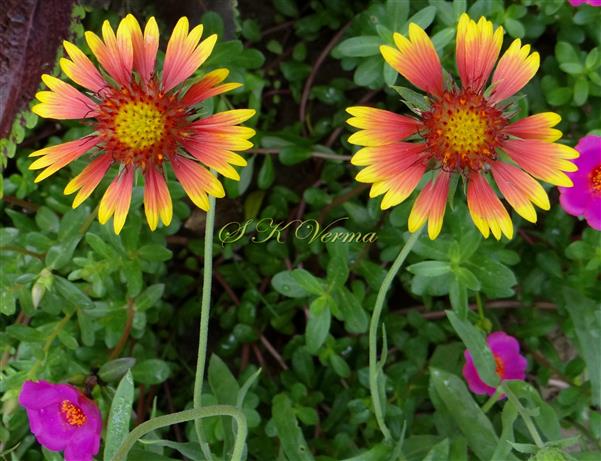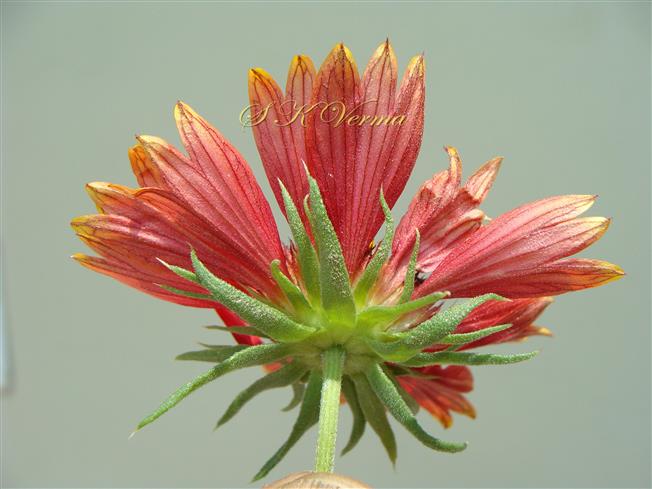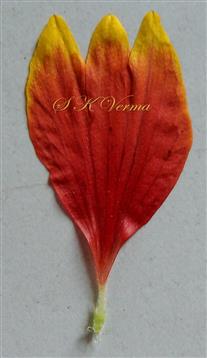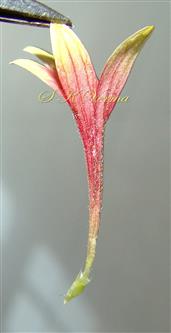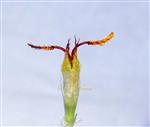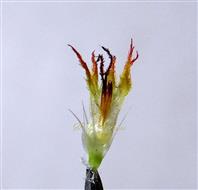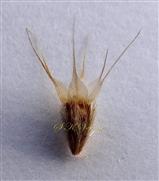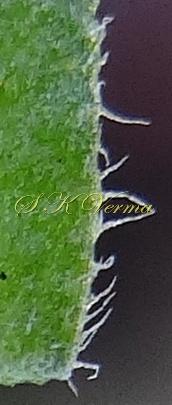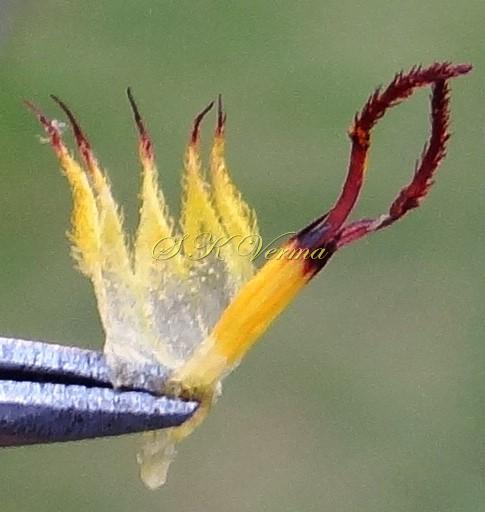GAILLARDIA
Gaillardia
Foug., Observ. Phys. 29: 55. 1786. (as Gaillarda); Hist. Acad. Roy. Sci. Mem. Math. Phys. (Paris, 4 to) 1786: 5. 1788; Fl. China @ eFloras.org 20-21: 878; Strother, Fl. North Amer. @ eFloras.org 21: 421.
Annuals, perennials, herbs or subshrubs, 10-80+ cm, sometimes rhizomatous. Stems usually erect, usually branched. Leaves basal and / or cauline; petiolate or sessile; leaf blades mostly elliptic, lanceolate, linear, oblong, obovate, ovate or spatulate, often pinnately lobed, ultimate margins toothed or entire, faces usually scaberulous to villous, rarely glabrous, usually notably gland-dotted. Capitula usually radiate or discoid, sometimes radiant, borne singly, terminal or axillary. Involucres hemispheric to nearly rotate, mostly 9-20+ mm diameter. Phyllaries persistent, 14-40+ in 2-3 series (reflexed in fruit), usually free, oblanceolate, lanceolate, narrowly triangular or linear, sub equal to unequal, usually chartaceous proximally, distally herbaceous, apices usually attenuate. Receptacle convex to hemispheric, smooth or pitted (often with scattered, hard, setiform enations), epaleate. Ray florets: 0 or 5-15+, usually neuter, rarely pistillate and fertile or styliferous and sterile. Corollas yellow to white or orange to red, purplish or brown, often bicolored (sometimes ray corollas funnelform, 5-lobed, heads radiant). Disc florets: 20-100+, bisexual, fertile. Corolla yellow to orange to red, purplish or brown (distally +/- shaggily hairy, hairs jointed), tube much shorter than ampliate, campanulate to cylindric or urceolate throats, lobes 5, broadly deltate or ovate, +/- equal, sometimes attenuate or attenuate-terete apically. Style branch apices +/- attenuate, hispidulous. Cypselae obpyramidal to clavate, 4-angled, 1-1.5 mm diameter, sparsely to densely hairy (at least proximally, hairs straight). Pappi usually persistent, of 6-10+ medially thickened laterally scarious, scales in 1-2 series (all, some or none aristate).
21 species
Gaillardia pulchella
Gaillardia pulchella
Foug., Hist. Acad. Roy. Soc. Mem. Math. Phys. (Paris, 4 to) 1786: 5. fig. 1. 1788; Fl. China @ eFloras.org 20-21: 878; Strother, Fl. North Amer. @ eFloras.org 21: 421; Gaillardia drummondii (Hook.) DC., Prodr. 5: 652. 1836; G. neomexicana A. Nelson, Univ. Whom. Publ. Sci. Bot. 1: 135. 1926; G. picta D. Don, Brit. Fl. Gard. 6: t. 267. 1834; G. pulchella var. picta (D. Don) A. Gray, Syn. Fl. N. Amer. 1(2): 352. 1884.
Annual (sometimes persisting) herbs, 10-60 cm tall. Stem usually erect, branched, hairy: hairs dense, small and sparse, long up to 3 mm long. Leaves cauline and basal: cauline leaves alternate, sessile or subsessile; leaf blades linear, oblong, oblong-elliptic or spatulate, 4.5-10 cm x 0.7-1.8 cm, base attenuate, apex acute or obtuse, margin usually entire, sometimes toothed or shallowly lobed, densely appressed hairy, few sparse, long, jointed hairs; basal leaves +/- similar to cauline leaves but larger, up to 27 cm x 7 cm. Capitula radiate or radiant (with outer marginal florets enlarged, sometimes with zygomorphic corollas and sterile, central tubular, bisexual florets; also defined as discoid capitula with peripheral corollas variously expanded) borne singly, terminal or axillary, 6-7 cm across. Peduncles 3-20(-20) cm long, pubescent. Involucre hemispheric, usually 2-3.5 cm in diameter. Phyllaries 18-28, persistent, (reflexed in fruit), green, herbaceous, larger in outer series than in inner series, 11-18 mm x 2-3.5 mm, apex acute, apiculate, surfaces appressed hairy, basal region with long hairs. Receptacle hemispheric, epaleate, setose.
Peripheral Florets in Radiate Capitula
Ray florets: 8-14, in 1 series, female, sterile. Corolla ligulate, ca. 3 cm x 1.7 cm; tube ca. 2 mm long, hairy; limb reddish to purplish proximally, pale yellow to orange distally, rarely yellow, reddish or purplish throughout, apically 3-lobed, lobes ca. 6 mm long. Pappus present. Style and stigma absent, ovary present.
Peripheral Florets in Radiant Capitula
Disc florets: 14 to many, 1-more seriate. Corolla actinomorphic or zygomorphic, trumpet-shaped, ca. 2 cm long; tube ca. 5 mm long, mostly red, hairy; limb 4-5 lobed, lobes equal or unequal, ovate or ovate-lanceolate, apically usually yellow, sparsely hairy. Ovary ca. 3 mm long, style and stigma absent. Pappus of 5, free, unequal, aristate scales.
Central Disc Florets ( Both in Radiate and Radiant Heads) : 20-100+, bisexual, fertile, ca. 1 cm long. Corolla yellow to orange red, purplish or brown; tube much shorter than ampliate campanulate to cylindric or urceolate throats, lobes 5, equal, broadly deltate or ovate, distally attenuate, +/- shaggily hairy, hairs jointed. Ovary ca. 1.5 mm long; style branches ca. 3 mm long, linear, attenuate, hispidulous. Cypselae obpyramidal 2-2.5 mm long, hairy, hairs 1.5-2 mm inserted at base and on angles. Pappus of 7 to 8 deltate, deltate to lanceolate, aristate scales, 4-7 mm long.
Common Names: Firewheel, Indian Blanket, Indian Blanket Flower, Sundance
